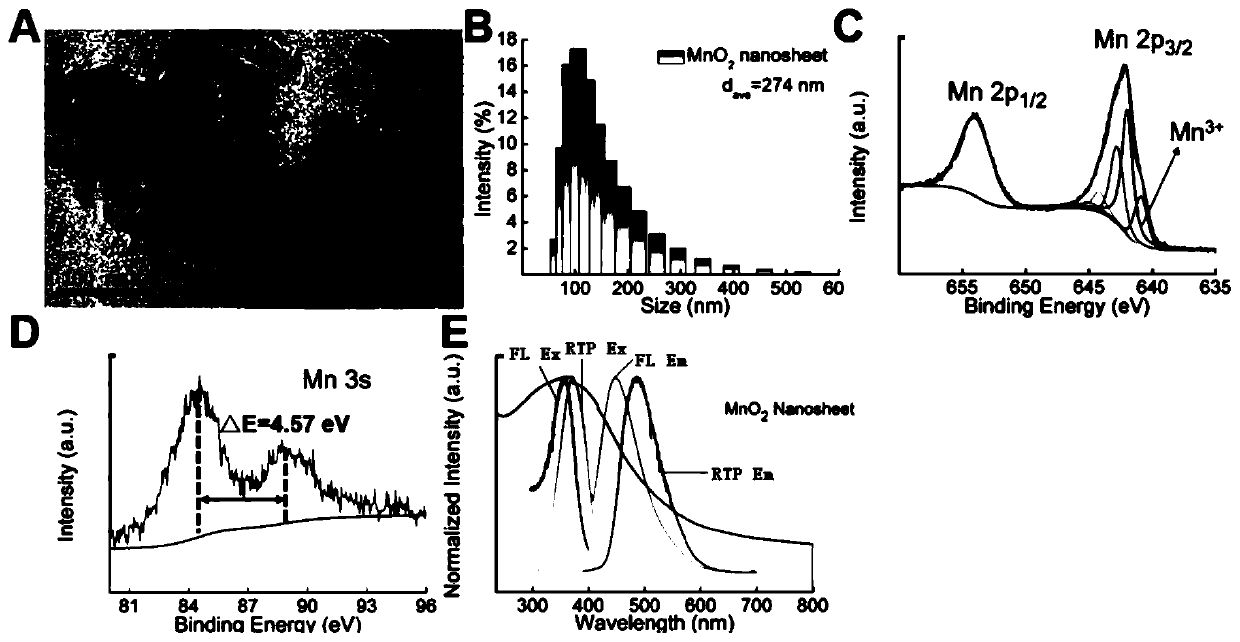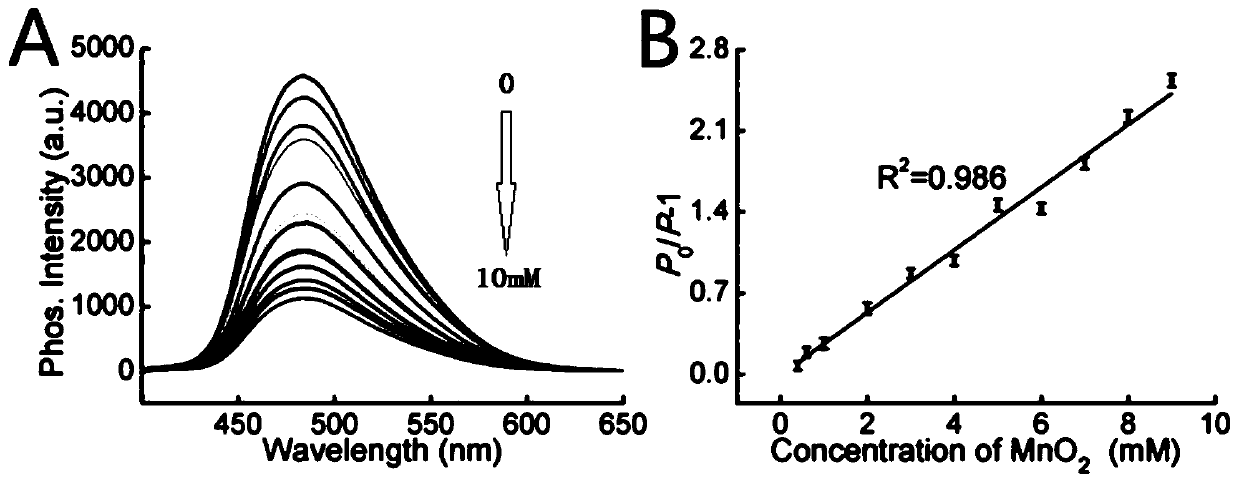Preparation method of cyanuric acid-carbon dot composite nano phosphorescent probe and application thereof
A technology of cyanuric acid and carbon dots, applied in fluorescence/phosphorescence, chemical instruments and methods, luminescent materials, etc., can solve problems such as interference detection, and achieve the effects of mild reaction conditions, good selectivity, and easy availability of raw materials
- Summary
- Abstract
- Description
- Claims
- Application Information
AI Technical Summary
Problems solved by technology
Method used
Image
Examples
Embodiment 1
[0064] Such as figure 1 Shown, the preparation method of cyanuric acid-carbon dot composite nano-phosphorescence probe comprises the following steps:
[0065] S1. Dissolving 3 g of manganese chloride tetrahydrate in 50 mL of water to obtain a solution of manganese chloride tetrahydrate; adding 43 mL of tetramethylammonium hydroxide and 20 mL of hydrogen peroxide to 137 mL of water to obtain a mixed solution;
[0066] S2. Mix the manganese chloride tetrahydrate solution and the mixed solution, then stir and react at 25°C for 12h, centrifuge after the end, wash the precipitate with water and methanol for 3 times, and dry it in an oven at 50°C for 1h. Obtain manganese dioxide nanosheets;
[0067] S3. Disperse the manganese dioxide nanosheets in water, and ultrasonicate for 30 minutes to make a manganese dioxide nanosheet solution with a concentration of 7 mM; dissolve the water room temperature phosphorescent material in water to make a room temperature phosphorescent material s...
Embodiment 2
[0070] In this example, in addition to replacing the concentration of the manganese dioxide nanosheet solution made in S3 of Example 1 with 400 μM, 600 μM, 1 mM, 2 mM, 3 mM, 4 mM, 5 mM, 6 mM, 8 mM or 9 mM, and adding MES buffer solution The pH value is replaced as except 5, and all the other are identical with embodiment 1.
Embodiment 3
[0072] In this example, except that the pH value of the MES buffer solution in S4 of Example 1 is replaced by 5, and the volume ratio of the manganese dioxide nanosheet solution, the room temperature phosphorescent material suspension and the MES buffer solution is replaced by 2:5:3.4 Except, all the other are identical with embodiment 1.
PUM
| Property | Measurement | Unit |
|---|---|---|
| The average particle size | aaaaa | aaaaa |
| Fluorescence lifetime | aaaaa | aaaaa |
| Linear correlation coefficient | aaaaa | aaaaa |
Abstract
Description
Claims
Application Information
 Login to View More
Login to View More - R&D
- Intellectual Property
- Life Sciences
- Materials
- Tech Scout
- Unparalleled Data Quality
- Higher Quality Content
- 60% Fewer Hallucinations
Browse by: Latest US Patents, China's latest patents, Technical Efficacy Thesaurus, Application Domain, Technology Topic, Popular Technical Reports.
© 2025 PatSnap. All rights reserved.Legal|Privacy policy|Modern Slavery Act Transparency Statement|Sitemap|About US| Contact US: help@patsnap.com



